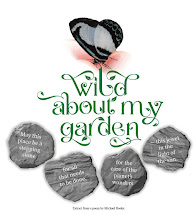Adapted from the Toowoomba Field Naturalist Club newsletter, Issue 800, October 2024
 |
North Branch of the Condamine
Photo: R. Ashdown |
Members travelled west out of the basalt hill
country onto the black soil plains (originally treeless grassland) of the
Condamine River Alluvial Plains. At the property near Nangwee we were welcomed by our hosts and their family; their daughter and son being the fourth generation on the land.
This sustainably managed cereal and cotton property has double frontage along the North Branch of the Condamine River providing habitat for native fauna, including the Endangered  |
Condamine Earless Dragon
Photo: L. Balmain |
Condamine Earless Dragon Tympanocryptis Condaminensis and the Vulnerable Brigalow Woodland Snail Adclarkia cameroni. Quality crops of chickpeas, sorghum, wheat, barley and more, assisted by irrigation from water harvesting and alluvial water from the Condamine Catchment Alluvium, are produced on the property.
From along the treed banks of the North Branch of the Condamine and around the homestead and dams, the following list of fauna has been compiled from members' sightings.
Mammals: Eastern Grey
Kangaroo, European Brown Hare, Red Fox* Birds: Hardhead, Pacific Black
Duck, Grey Teal, Australian Wood Duck, Australasian Grebe, Rock Dove, Spotted
Dove, Crested Pigeon, Dusky Moorhen, Pied Stilt, Masked Lapwing, Silver Gull,
Australian Tern, Australian Pelican*, White-necked Heron*, Eastern Great Egret,
Australian White Ibis, Little Pied Cormorant, Little Black Cormorant, Pied
Cormorant, Australasian Darter, Black-shouldered Kite*, Wedge-tailed Eagle*,
Spotted Harrier*, Grey Goshawk*, Whistling Kite, Black Kite, Eastern Barn Owl,
Sacred Kingfisher, Laughing Kookaburra, Nankeen Kestrel, Cockatiel, Galah,
Little Corella, Sulphur-crested Cockatoo, Red-winged Parrot, Pale-headed
Rosella, Scaly-breasted Lorikeet, Superb Fairy-wren, Striped Honeyeater, Noisy
Friarbird, Little Friarbird, Brown Honeyeater, Blue-faced Honeyeater, White-plumed
Honeyeater, Noisy Miner, Spotted Pardalote, Striated Pardalote, White-throated Gerygone, Western Gerygone, Black-faced Cuckoo-shrike, Rufous Whistler, Golden
Whistler, Australian Magpie, Pied Butcherbird, Willie Wagtail, Grey Fantail,
Torresian Crow, Australian Raven, Restless Flycatcher, Magpie-lark,
Apostlebird, Mistletoebird, Double-barred Finch, Australasian Pipit,
Golden-headed Cisticola, Welcome Swallow, Common Myna. Reptiles:
Red-bellied Black Snake* Amphibians: Emerald Spotted Treefrog Molluscs:
Brigalow Woodland Snail*, Invasive Field Slug Deroceras invadens, Freshwater
Mussel Alathyria jacksoni Crustaceans: Common Yabbie Cherax
destructor Butterflies: Orchard Swallowtail, Chequered Swallowtail, Green
Grass-dart, Small Grass-yellow, Cabbage White, Caper White, Black Jezebel, Lesser
Wanderer, Monarch, Common Crow, Glasswing, Meadow Argus, Brown Ringlet, Common
Grass-blue. Dragonflies and damselflies: Aurora Bluetail, Australian
Emperor, Tau Emerald, Wandering Percher, Scarlet Percher, Blue Skimmer.
* Denotes species seen enroute to and from
Toowoomba/Nangwee.
 |
Nats enjoying a break on the September outing
Photo: D. Johnston |


























